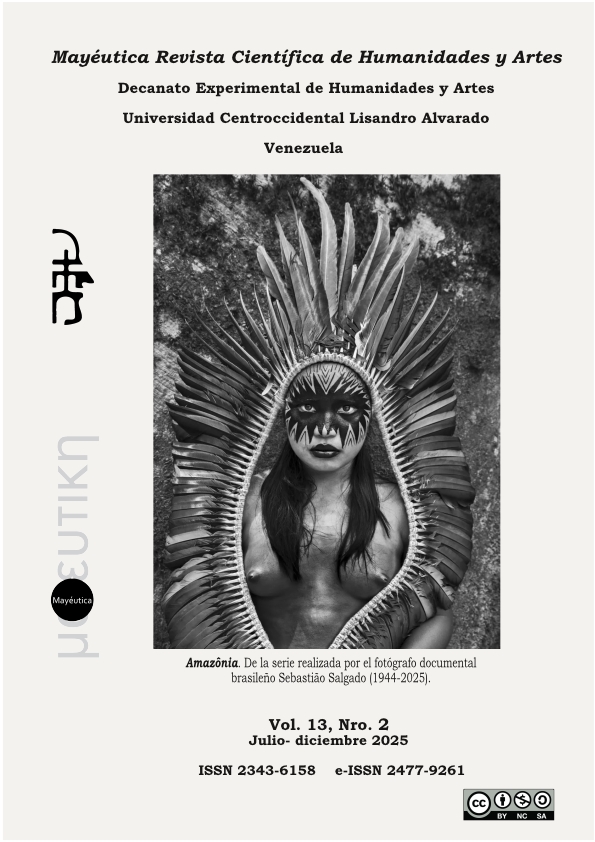Space, empathy and becoming
Transits and thresholds in the film A Fantastic Woman
DOI:
https://doi.org/10.5281/zenodo.15763793Keywords:
cinema, gender, space, city, A Fantastic WomanAbstract
The film A Fantastic Woman depicts three days in the life of a transgender woman who has just lost her male partner. Throughout its development, the film unfolds as a dialectic between urban scenes shaped by the selection and cinematic treatment of its locations and the protagonist's transformations and struggles. The purpose of this research, undertaken through a descriptive film analysis and a correlational study of the locations, is to identify and describe these relationships between space and the subject’s transformations. Over the course of the film, the character achieves a profound consolidation of her identity, within a spatial organization described as a succession of transitions and thresholds, highlighting how the latter, as moments of intense transformation, occur mainly in underground spaces. Through this spatial construction, which moves away from the conventional tropes of the filmed city, the fusion of representations and locations becomes evident in narrating Marina’s evolution toward a more universal identity—one that transcends the heterosexual matrix, opposes glamorous visions of transsexual, and embraces behaviors spanning multiple genders and even species. This exercise unfolds in a dual relationship with spatiality: first, in the handling of locations and the topological construction to be described; and second, in how the filmic choices produce a highly empathetic perception of the protagonist and her experience of space.
Downloads
References
Benjamin, W. (1936). La obra de arte en la época de su reproductibilidad técnica. En Discursos Interrumpidos. I. Taurus.
Braidotti, R. (2002). Met(r)morphoses: Becoming woman/animal/insect. En R. Braidotti (Ed.), Metamorphoses. Towards a materialistic theory of becoming.
Bulgakowa, O. (2005). Eisensyein, the Glass House and the Spherical Book. En Rouge (Número 7). http://www.rouge.com.au/7/eisenstein.html
Butler, J. (1993). Cuerpos que importan. Sobre los límites materiales y discursivos del sexo. Paidós.
Cáceres, G. (2018). Una Mujer Fantástica en la Ciudad. Facultad de Arquitectura, Diseño y Estudios Urbanos de la Pontificia Universidad Católica de Chile. http://fadeu.uc.cl/noticias/1718unamujerfantasticaenlaciudad
Campbell, J. (1949). The hero with a thousand faces. Pantheon.
De Waal, A., & Armstron, F. (2020). Trans/national necronarratives: mourning, vitality, and nonreproductivity in Una mujer fantástica. European Journal of English Studies, 24(1), 52-64. https://doi.org/10.1080/13825577.2020.1730038
Dittus Benavente, R. (2015). Fundamentos para un estudio del guion en el cine chileno: notas preliminares. Aisthesis, 58, 237–254.http://dx.doi.org/10.4067/S071871812015000200012
Eisenstein, S. M. (2001). Montaje y arquitectura. En M. Glendy (Ed.), Hacia una teoría del montaje (pp. 87–109). Paidós.
Feldman, M. (2014). Castrato Acts. En H. M. Greenwald (Ed.), The Oxford Handbook of Opera (pp. 395–418). Oxford University Press.
García, G. (2001). El retorno de los brujos. Letras Libres. https:// www.letraslibres.com/mexicoespana/elretornolosbrujos
Kroll, J. A. (2022). Embodied Existence as Resistance: The Transgender Body in Una mujer fantástica (2017) and Bixa
Travesty (2018). En J. A. Kroll (Ed.), Body, Gender, and Sexuality in Latin American Cinema: Insurgent Skin. (pp. 203–243). Palgrave Macmillan Cham.
Lelio, S., Larraín;, J. de D., Larraín;, P., Leilo;, S., & Meza, G. (2018). Audio commentary en Una Mujer Fantástica (edición Apple Itunes Store) [Video recording]. Fábula.
Manningel, M. (2020). “Soy lo mismo que tú” Presencia del discurso de identidad trans en Una mujer fantástica, obra cinematográfica de Sebastián Lelio. [Tesis de Magíster]. University of bergen.
Morales Lastra, E. (2017). “Una mujer fantástica”, nunca me abandones. Cooperativa.https://opinion.cooperativa.cl/opinion/cine/unamujerfantastica nuncameabandones/20170520/071359.html
Quispe Alarcon, A. G. (2023). Hacia una inclusión real: representación trans en “Una mujer fantástica” desde la audiencia peruana. [Tesis de Licenciatura]. Facultad de Comunicaciones, Universidad Peruana de Ciencias Aplicadas.
Serratos, F. (2017). El devenir animal del sujeto femenino: Tarazona, Lispector, Braidotti. Nóesis. Revista de Ciencias Sociales, 26(51), 94–106. http://dx.doi.org/10.20983/noesis.2017.1.6
Stadler, J. (2017). Empathy in film. En H. Maibom (Ed.), The Routledge handbook of philosophy of empathy. (pp. 317–326). Routledge.
Sutcliffe, A. (1993). La ciudad en el cine. Historia urbana: revista de historia de las ideas y de las transformaciones urbanas, 2, 7–24.
Vergara, G. A., Canales Araya, C., Collío Méndez, C., Morales, F., Universidad, G. P., & Hurtado, A. (2020). “Una Mujer Fantástica”: una vivencia de lo trans en el Chile actual. Praxis y cultura Psi, 33, 8–22.
Vielma, J. I. (2018). Entrevista a Horacio Donoso (J. I. Vielma, Ed.).
Vielma, J. I. (2018). Las experiencias de la pobreza y la exclusión en los tránsitos y umbrales narrativos del cine: ‘Umberto D.’ y ‘Biutiful’. En Planeo, 32, 1–19.
Published
How to Cite
Issue
Section
Copyright (c) 2025 José Ignacio Vielma Cabruja

This work is licensed under a Creative Commons Attribution-NonCommercial-ShareAlike 4.0 International License.





